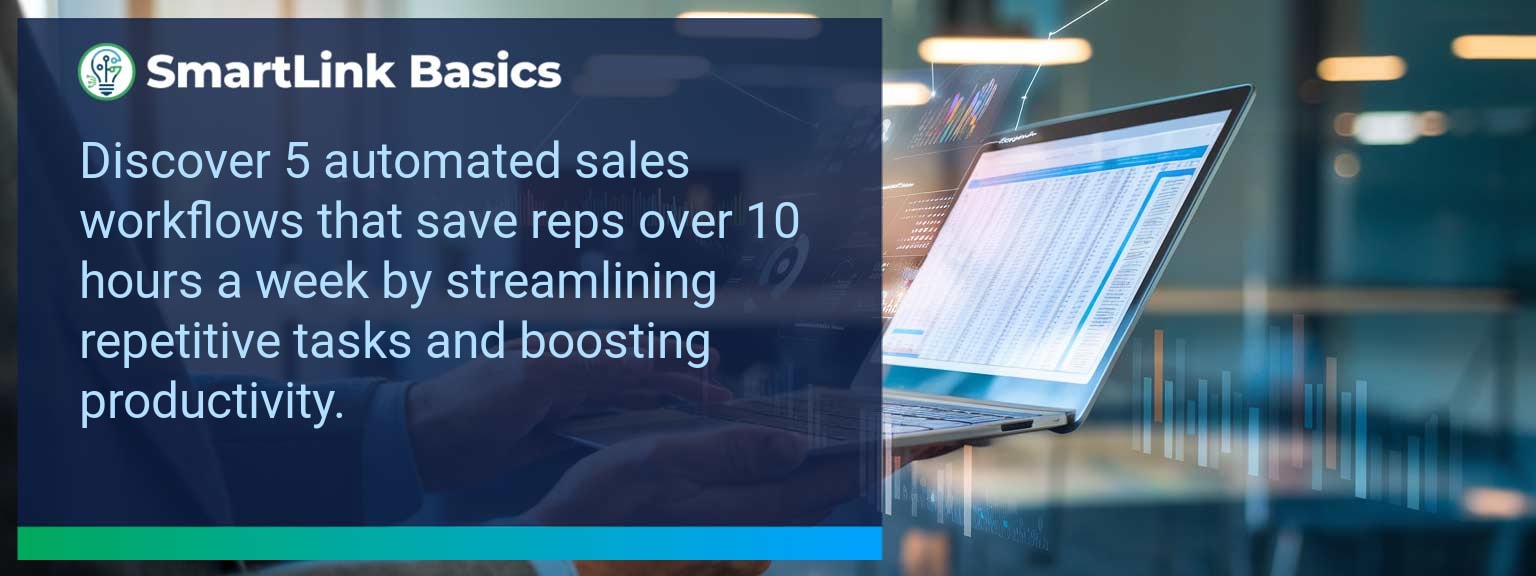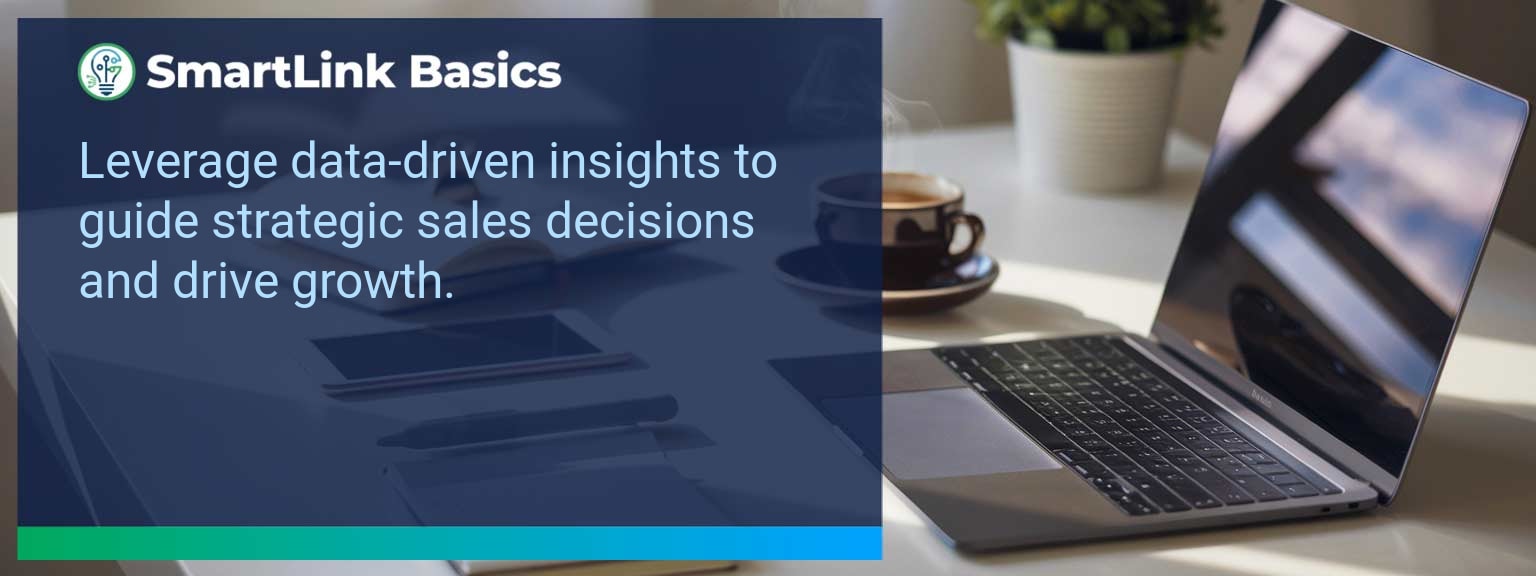Sales reps spend nearly 65% of their time on non-revenue generating activities, from email follow-ups to data entry. This inefficiency is costly, especially in competitive B2B environments where time is the biggest revenue lever. At SmartLink Basics, we emphasize the adoption of automated systems that empower sales teams to redirect focus toward conversations and deals. Implementing automated sales workflows enables leaders to cut repetitive tasks by double-digit hours per week. This article explores five automated workflows that save sales teams over 10 hours weekly while boosting client engagement, pipeline velocity, and sales productivity.
- Automated lead qualification reduces wasted time on low-fit prospects.
- Follow-up automation ensures consistent, timely communication.
- Meeting scheduling tools eliminate back-and-forth appointment setting.
- Automated reporting delivers real-time sales insights without manual effort.
- CRM automation organizes tasks, reminders, and workflows seamlessly.
Common Time Drains In Traditional Sales Processes
Before automation, sales reps invested hours in lead qualification, manual follow-ups, scheduling, and spreadsheet-driven reporting. These administrative processes created bottlenecks in customer engagement and slowed down deal cycles. Every hour spent on repetitive tasks reduced time available for building relationships and revenue-generating work.
With increased competition and buyer expectations for speed, these delays cause lost opportunities. Automation addresses this challenge by enabling tools that minimize manual overhead across multiple areas of the sales cycle.
Leveraging Automation To Streamline Sales Workflows
Adopting automated sales workflows is less about replacing human intelligence and more about accelerating critical sales functions. By automating repetitive steps, leaders enable reps to work smarter and focus on client-facing activities. From lead scoring to CRM task management, sales automation tools create scalable efficiencies.
Once properly integrated, automation becomes a natural extension of a team’s operating rhythm, bridging efficiency gaps and boosting sales productivity. The following five workflows illustrate direct applications every sales team can implement.
Workflow Automation For Lead Qualification
AI-driven lead scoring evaluates prospects based on activity, engagement, and fit. This reduces wasted time chasing poor matches while surfacing high-priority leads instantly. CRM automation tools like Salesforce or HubSpot enable tailored scoring models aligned with revenue priorities.
With this workflow, sales reps gain clarity on who to call first, reducing time wasted on non-qualified leads by up to 50%. This speed to engagement often shortens sales cycles significantly.
Automated Follow-Up Emails
Follow-up automation ensures no contact falls through the cracks. Predefined sequences adapt to behaviors such as webinar attendance, eBook downloads, or initial demo requests. Tools like Outreach and Yesware simplify email orchestration and free reps from manual reminders.
This workflow guarantees consistent engagement and builds trust, while saving hours normally consumed by repetitive drafting and sending of follow-up messages.
Scheduling Meetings With Automation Tools
Meeting scheduling is one of the most inefficient exchanges in sales. Tools such as Calendly or Doodle automate the booking process, syncing with calendars and offering prospects direct scheduling options. This eliminates long email threads and accelerates pipeline velocity.
When multiplied across dozens of client touchpoints per week, automated scheduling can save three to four hours of rep time easily.
Automated Reporting And Analytics
Manual performance reporting consumes valuable time each week, often leading to incomplete or delayed insights. Platforms like Tableau and Google Data Studio enable automated dashboard generation, offering real-time metrics across deal velocity, conversion, and pipeline health.
This not only frees up administrative time but also ensures leadership can make decisions backed by immediate data visibility.
Task Automation Through CRM Integration
Using integrated workflows with CRMs, task automation allows for instant assignment, reminders, and prioritization of critical activities. For example, when a lead moves from marketing qualified to sales stage, a task can automatically be logged for call prep.
Zapier and CRM-native automation save time otherwise lost to manual task creation and follow-ups while keeping reps aligned with their operating cadence.
Proven Time Savings And Productivity Gains
Collectively, these five workflows save sales reps over 10 hours per week. Beyond reducing effort, sales automation tools elevate sales productivity by ensuring consistency, accuracy, and faster engagement cycles. Teams that leverage these automated workflows often report higher win rates and improved forecasting accuracy.
The Next Evolution Of Sales Automation
The future of automation brings tighter AI integration, predicting buyer intent and personalizing outreach at scale. Sales leaders who invest in automation now will build agile systems capable of adapting quickly as customer expectations evolve. As automation amplifies efficiency, teams retain space for the uniquely human skill of authentic customer connection.
| Category | Metric | Definition | Target |
|---|---|---|---|
| Leading | Lead Scoring Coverage | % of incoming leads automatically scored via workflow | 95%+ |
| Leading | Automated Follow-Up Rate | % of trigger-based follow-ups executed without manual effort | 90%+ |
| Lagging | Weekly Time Saved | Total hours reduced per rep from workflow automation | 10+ hours |
| Lagging | Pipeline Velocity | Average time deals move through the funnel | 20% faster |
| Quality | Engagement Response Rate | % of customers responding to automated communications | 30%+ |
| Quality | Rep Satisfaction Score | Sales team feedback on automation ease-of-use | 8/10 |
Get the 90-day plan, coaching rubric, and dashboard template to operationalize AI in your enablement program.
Why Smart Sales Leaders Embrace Workflow Automation
Automation is no longer optional for sales organizations aiming to scale. By streamlining lead scoring, follow-ups, scheduling, reporting, and task management, teams free more than 10 weekly hours for client-facing work. This shift unlocks stronger engagement and faster revenue growth. Explore more AI-driven sales enablement resources from SmartLink Basics to accelerate your team’s transformation today.









